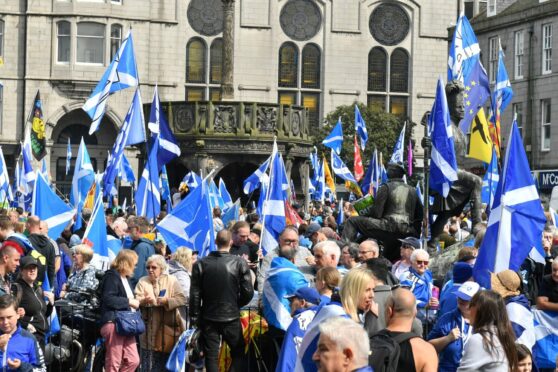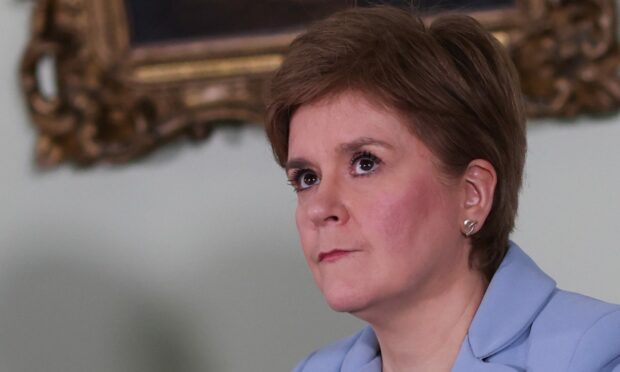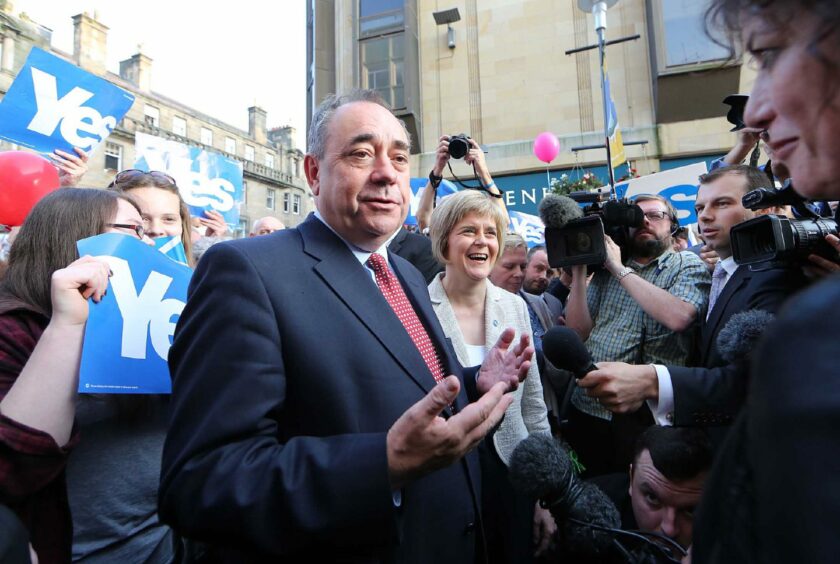Nicola Sturgeon has been sent back to the drawing board by the UK’s highest court where judges ruled Holyrood does not have the power to hold a referendum without Westminster’s approval.
The first minister referred her plans to hold a second vote on independence next October to the UK’s top judges earlier this year.
But in a landmark ruling on Wednesday, Lord Reed said: “The Scottish Parliament does not have the power to legislate for a referendum on Scottish independence.”
Ms Sturgeon immediately claimed the ruling makes the argument stronger for breaking up the union.
She said: “A law that doesn’t allow Scotland to choose our own future without Westminster consent exposes as myth any notion of the UK as a voluntary partnership and makes the case for independence.”
The SNP leader repeated her claim that the next general election will be fought by her party on independence.
At a press conference in Edinburgh, she announced plans for a special SNP conference in the new year to hammer out the details.
Scotland’s top law officer, Lord Advocate Dorothy Bain, had asked the Supreme Court to rule on the legality of a referendum without Westminster approval.
The Tories have repeatedly said they will not allow the Scottish Government to go ahead with a fresh poll on breaking up the union.
‘Colony’
Dundee university constitutional law expert, Dr Tarik Olcay, said the ruling shows Scotland is “neither a colony or an occupied country”.
He said the SNP’s intervention in the court case had tried to make an argument about self-determination in international law.
“While some Scots may believe they are colonised or oppressed by the UK, the Supreme Court has clearly ruled that Scotland is neither a colony or an occupied country and therefore not subject to the international law governing the right to self-determination,” he said.
“The judgment leaves the Scottish Government with very limited room for progress in legal terms.”
Scottish Conservative leader Douglas Ross said the SNP should move on, despite criticism from his opponents that Conservatives are to blame for economic woes.
“The Scottish people have made it clear in poll after poll that they don’t want another referendum next year,” he said.
Former SNP leader and first minister Alex Salmond criticised Ms Sturgeon’s strategy as a “bad gamble”.
He said: “What should have happened was the Scottish Parliament should have passed the legislation for an independence referendum and forced the UK Government to be the ones that challenged it.
“Real Parliaments don’t ask for permission to implement their democratic mandate.
What happens next?
The court’s ruling is a major blow to the first minister and means she now has no obvious path to a referendum.
She can continue pushing Rishi Sunak to allow a vote, but the Tory prime minister has no intentions of backing down.
If that fails, the SNP leader’s strategy is for her party to fight the next UK general election on the single issue of independence.
Ms Sturgeon has said she will take a majority vote in favour of pro-independence parties as a green light to negotiate for leaving the UK.
But the UK Government would not be compelled to listen to this and could simply ignore the first minister.
Even if the Tories are ousted, Labour leader Keir Starmer has said he will not cave into the SNP’s demands for a referendum.
How did we get here?
The UK Government tried to stop the Supreme Court from hearing the case and argued it was not their responsibility to get involved.
Scottish Advocate General Lord Stewart KC, who acts for the UK Government, insisted the matter of allowing a referendum was “plainly” reserved to Westminster.
Ms Sturgeon has repeatedly claimed her party has a mandate for holding a rerun of the 2014 ballot due to Holyrood having a pro-independence majority.
In their arguments to the court, the SNP said a referendum did not refer to reserved matters since a vote for independence would not automatically bring about independence.
They also claimed a rerun of the 2014 poll should be allowed on the basis of self-determination.
Passing down his ruling, Lord Reed said a referendum would clearly strengthen or weaken the future of the union.
He also said Scotland’s right to self-determination was not relevant since the country is not actively oppressed.



Conversation